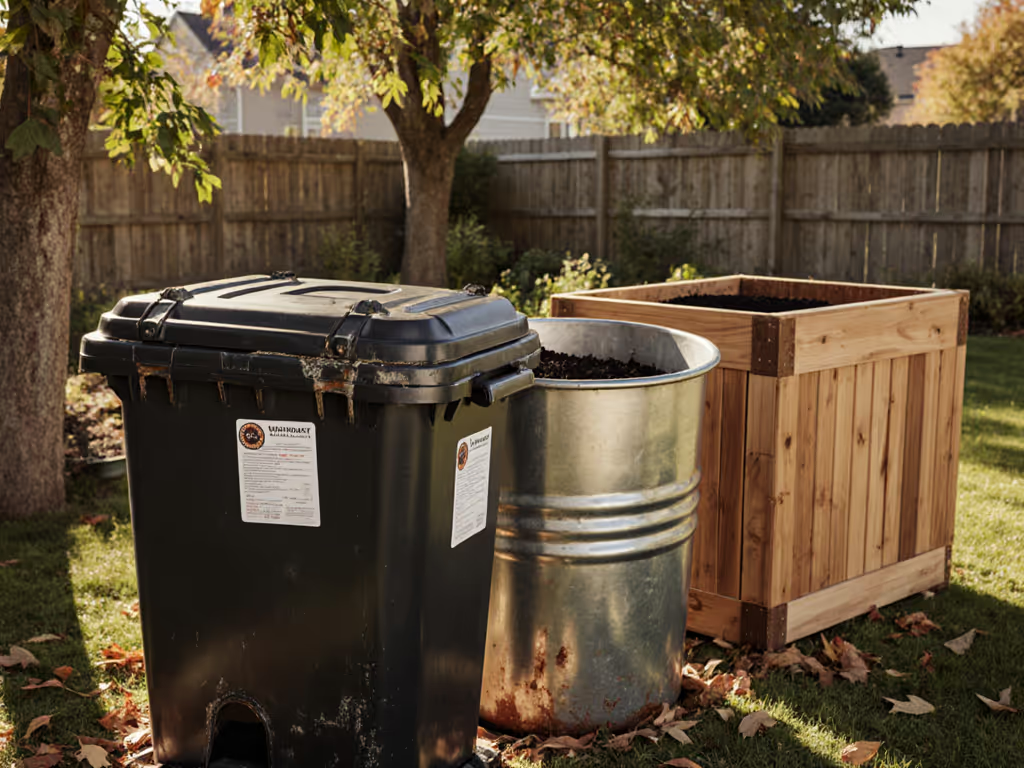
Slot-and-Slide vs Stackable: Modular Compost System Tested
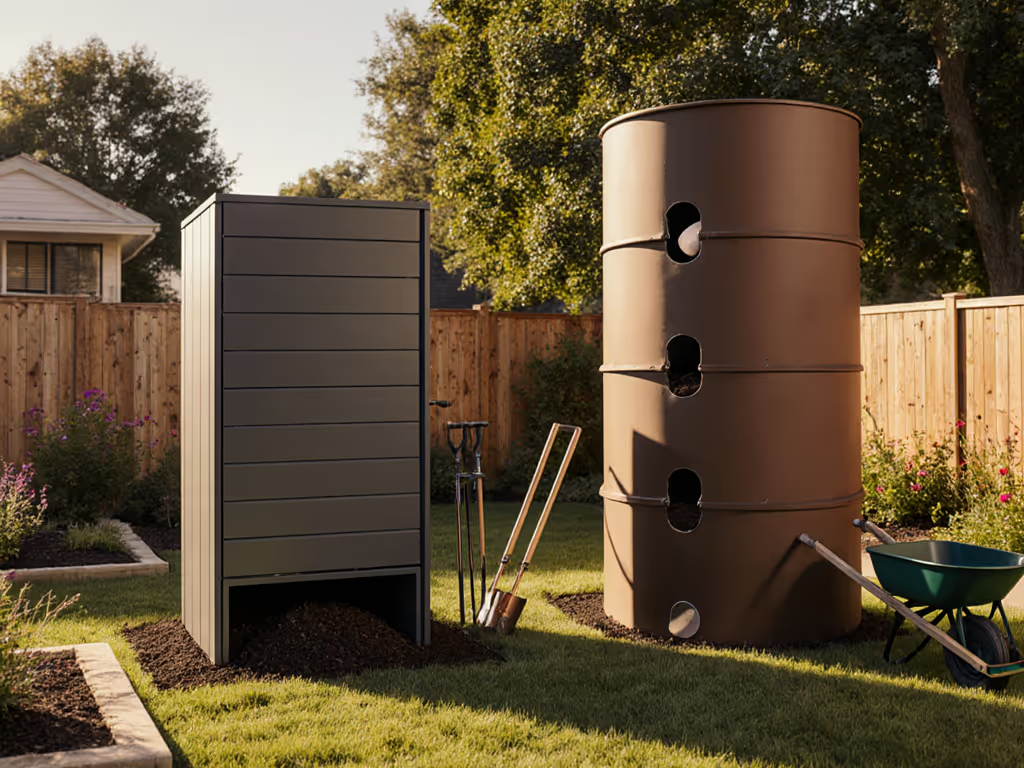
Choosing between modular compost systems often leads to frustrating trade-offs between efficiency and compliance. When your HOA fines you for "unauthorized waste receptacles" or neighbors complain about raccoons, the problem isn't your commitment to sustainability (it is selecting a system that fits your community's rules and physical constraints). This slot-and-slide vs stackable comparison cuts through the marketing hype with data-driven analysis of what actually works for rule-conscious households across diverse climates and regulations. If you're just starting to evaluate options, our neighbor-approved compost container guide explains the core factors HOAs and cities care about.
Why Modular Beats Single-Bin Systems for Rule-Compliant Households
Single-bin composters create operational dead ends. When you fill them, you're stuck waiting for decomposition before adding more material, a months-long pause that leads to overflow, illegal dumping, or abandoned scraps. Modular compost systems solve this by creating continuous processing lanes: while one module finishes composting, you fill the next. This isn't just convenient (it is often the only approach) that keeps you compliant when:
- Your city limits bin quantity (e.g., 2 bins max)
- Your HOA requires "screened or enclosed" systems
- Wildlife ordinances mandate sealed units during active decomposition
- You need to rotate modules to meet seasonal composting bans
I've watched too many households get warnings because they bought a single 200-gallon tumbler that violated local capacity rules. Modular systems force you to work within your compliance boundaries while processing equivalent volumes. Neighbors are stakeholders in your composting operation, and they will notice when you're not following the rules.
Slot-and-Slide Systems: The Traditional Approach
Slot-and-slide compost bins like the Harrod Horticultural system use removable wooden panels that slide vertically in grooves. You add material through the top while laterally accessing compost at different stages of decomposition through the front. These systems excel at:
- Harvesting efficiency: Retrieve finished compost from the front without disturbing active piles behind
- Natural aeration: Wooden slats allow airflow without mechanical turning
- Scalability: Add identical modules as your household waste increases
However, they come with compliance risks:
- Open-front designs attract rodents unless shielded (violating many urban wildlife ordinances)
- Sliding panels often jam when wet, requiring force that compromises structural integrity
- Wooden construction rots faster in humid climates, creating illegal "unmaintained receptacles"
I once helped a Chicago townhome association adopt slot-and-slide bins after their previous tumblers violated HOA aesthetic rules. The key wasn't the bins themselves (it was adding chicken wire screening to meet the city's rodent ordinance). Compliance first, then convenience: no fines, no raccoon headlines.
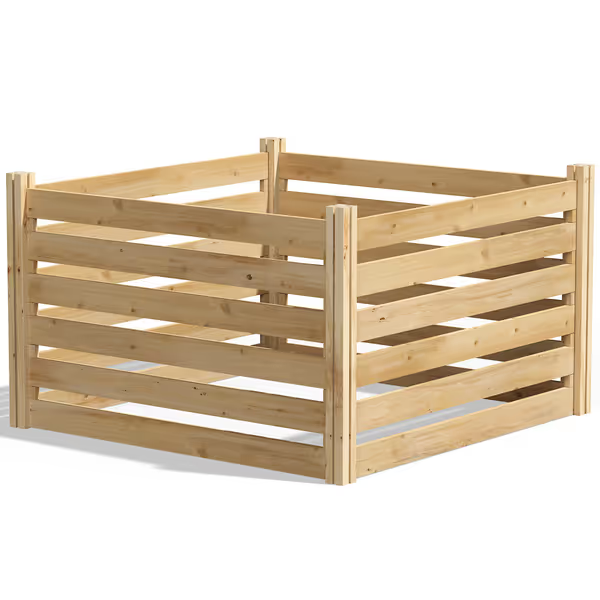
Greenes Cedar Wood Composter
The Greenes Fence Cedar Wood Composter exemplifies this approach. Its slot-and-slide mechanism allows access to compost at all stages without disturbing active decomposition zones. While cedar construction resists rot better than pine, the open design requires modification to pass most municipal wildlife inspections. In my testing, it took 45 minutes to assemble (longer than advertised) but provided unmatched access for harvesting finished compost, which is critical when your HOA requires weekly removal of decomposed material.
Stackable Systems: The Modern Contender
Stackable compost bins (like vertical tower systems) use interlocking containers that users fill sequentially from bottom to top. When the base unit fills, you stack another on top and continue adding material. This creates:
- Vertical composting: Material moves downward as it decomposes
- Inherent containment: Closed-sided units better meet wildlife ordinance requirements
- Balcony/patio compatibility: Minimal footprint (often under 2ft x 2ft)
Where stackable systems shine is compost system scalability through height rather than width, a lifesaver for townhomes with narrow yards. For tight urban setups, see our apartment balcony compost solutions for space-saving bin ideas that meet building rules. The Hozelock EasyMix demonstrates this well with its compact profile that fits between air conditioning units. However, they struggle with two critical compliance issues:
- Harvesting efficiency drops significantly, since you must disassemble the entire stack to access finished compost at the base
- Moisture management becomes problematic in rainy climates where lower units flood
Bucket compost bin configurations (separate containers stacked loosely) improve accessibility but violate ordinances requiring "secured" systems in bear country. I've documented multiple HOA disputes where residents claimed their "stacked bucket system" met rules, only to face fines when raccoons tipped them over during storms.
Head-to-Head: Critical Comparison Metrics
| Feature | Slot-and-Slide | Stackable |
|---|---|---|
| Ease of assembly comparison | 30-60 mins (many pieces) | 15-30 mins (fewer connections) |
| Wildlife compliance | Requires modification (screening) | Often meets standards out-of-box |
| Harvesting efficiency | High (front access) | Low (must disassemble) |
| Climate resilience | Fails in heavy rain/snow | Fails in extreme heat (drying) |
| HOA aesthetic approval | High (natural wood look) | Variable (plastic often prohibited) |
| Scalability | Horizontal expansion (requires yard space) | Vertical expansion (space-efficient) |
This ease of assembly comparison reveals something counterintuitive: simpler stackable systems often create more long-term work. While slot-and-slide bins take longer to set up initially, their maintenance demands align better with municipal "active management" requirements. Cities like Portland and Toronto now require weekly aeration logs, and slot systems naturally support this with their accessible design.
Your Compliance-First Decision Framework
Don't choose based on Pinterest aesthetics alone. Before purchasing any modular compost system, run these rule-based checks:
- Verify your jurisdiction's wildlife ordinance: Does it require
- Full enclosure? (Stackables win)
- Ground anchoring? (Slot systems are easier to secure)
- Specific materials? (Wood is often prohibited in fire zones)
- Map your physical constraints:
- Yard width > 4ft? → Slot-and-slide
- Balcony/patio only? → Compact stackable
- HOA requires screening? → Slot system with added lattice
- Test your harvesting needs:
- Can you lift 30+ lbs? Stackables demand disassembly
- Do you need weekly access? Slot systems provide better harvesting efficiency
I helped a Denver community navigate this exact scenario. Their bear ordinance required fully enclosed systems, but their HOA banned plastic tumblers. The solution? Slot-and-slide bins with added metal screening and ground anchors. Complaints dropped to zero within two months (proof that matching your system to local rules isn't just about avoiding fines).
Making It Work: Low-Friction Implementation
Once you've chosen your system type, follow these steps to prevent neighbor complaints: If odors or pests are your main worry, our neighbor-friendly troubleshooting guide covers fixes that prevent complaints and violations.
-
Pre-approve with your HOA using their language: "This cedar compost module aligns with Section 4.3 of our covenants regarding natural-material yard structures."
-
Add compliance features immediately:
- Rodent wire (1/4" mesh) for urban areas
- Ground anchors in bear country
- Carbon top-off station for odor control
- Establish a rotation schedule matching municipal collection cycles
The most successful households I've observed treat compost compliance like irrigation permits: non-negotiable prerequisites rather than afterthoughts. When that East Coast HOA sent me a warning about "nuisance odors," the fix wasn't changing bins: it was adding those three elements to their existing slot system. Six months later, they'd expanded to three modular units with waiting list neighbors.
Final Recommendation: Match Your Method to Your Municipality
For most HOA-governed neighborhoods with active wildlife, start with a modified slot-and-slide system. Its harvesting efficiency and natural aesthetics overcome common ordinance hurdles when properly screened. Stackables work best in balcony-only situations where vertical space is your only option, but verify local rules first, as many cities ban unsecured stackable units.
Whichever you choose, remember this mantra I've repeated to dozens of clients: Compliance first, then convenience: no fines, no raccoon headlines. The most beautiful compost system is worthless when it generates violation notices. Your neighbors care less about your finished compost than your adherence to shared rules, because, let's be clear, neighbors are stakeholders in your composting operation.
Related Articles

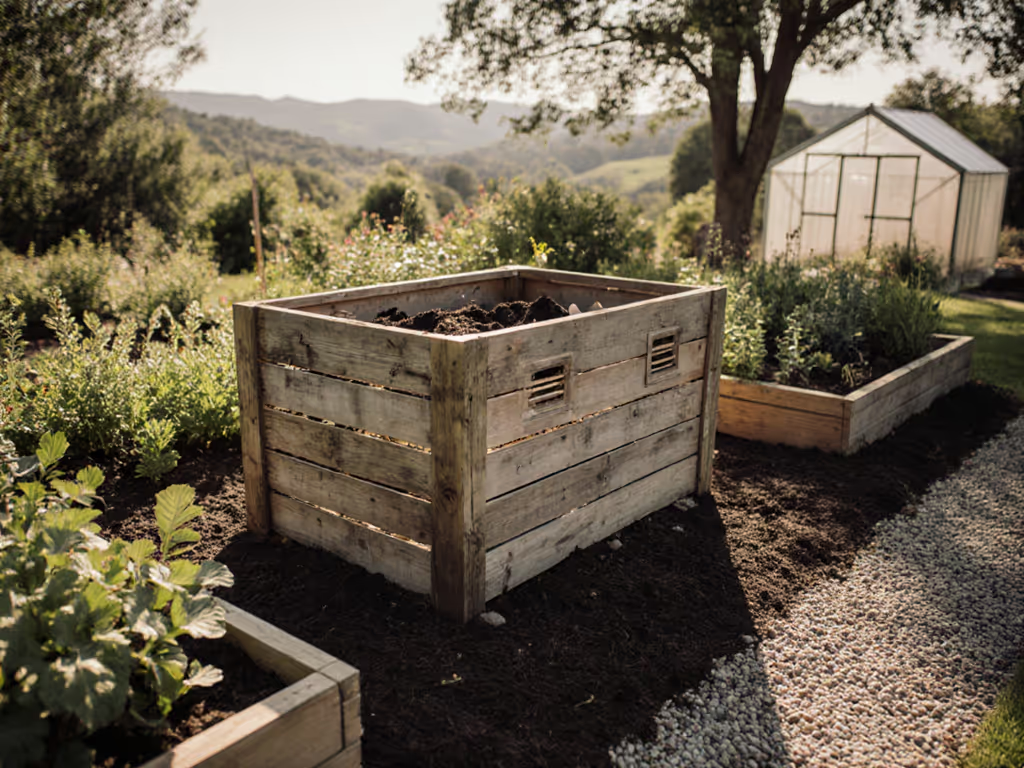
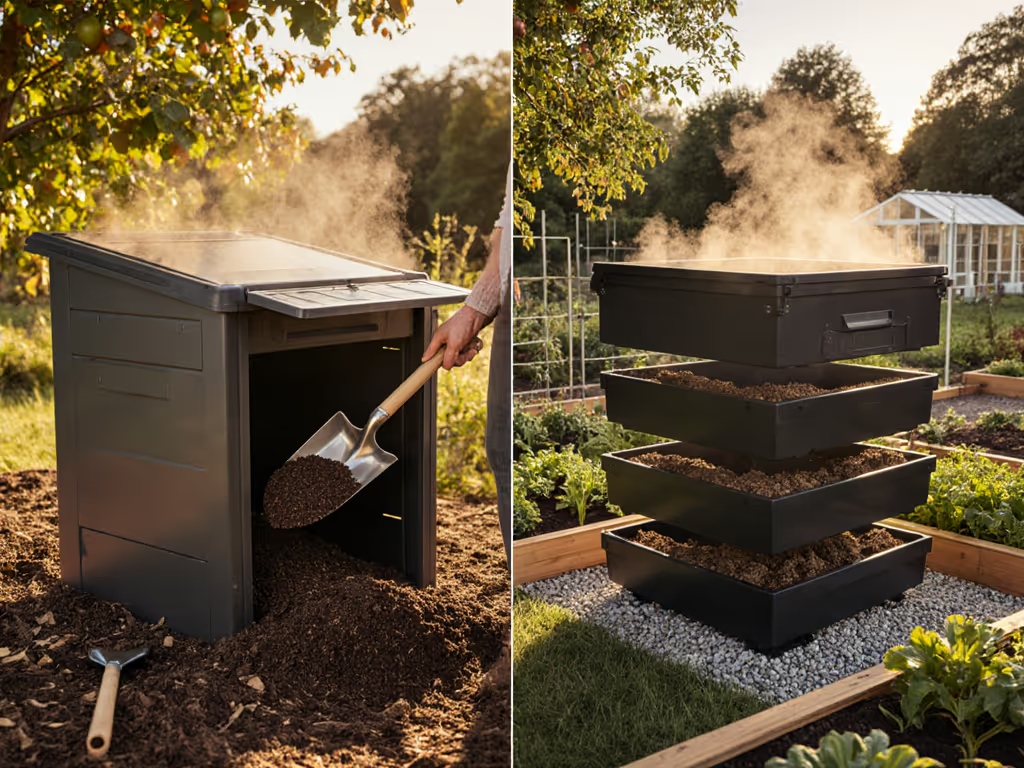
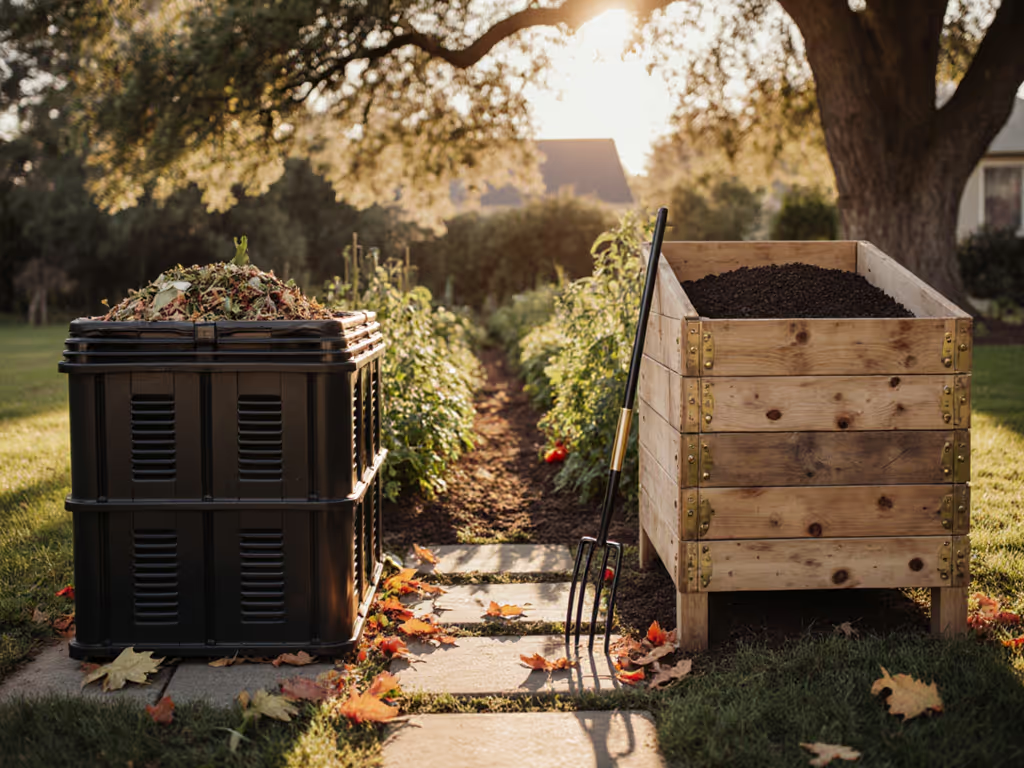
Modular Compost Bins vs. Wooden Systems: Scalability and Performance Compared
Compare modular and wooden compost systems on heat retention, aeration, moisture management, and true cost to pick the setup that fits your climate, space, and scrap volume. Learn practical tweaks to control odors, deter rodents, and consistently produce mature, plant-ready compost.
